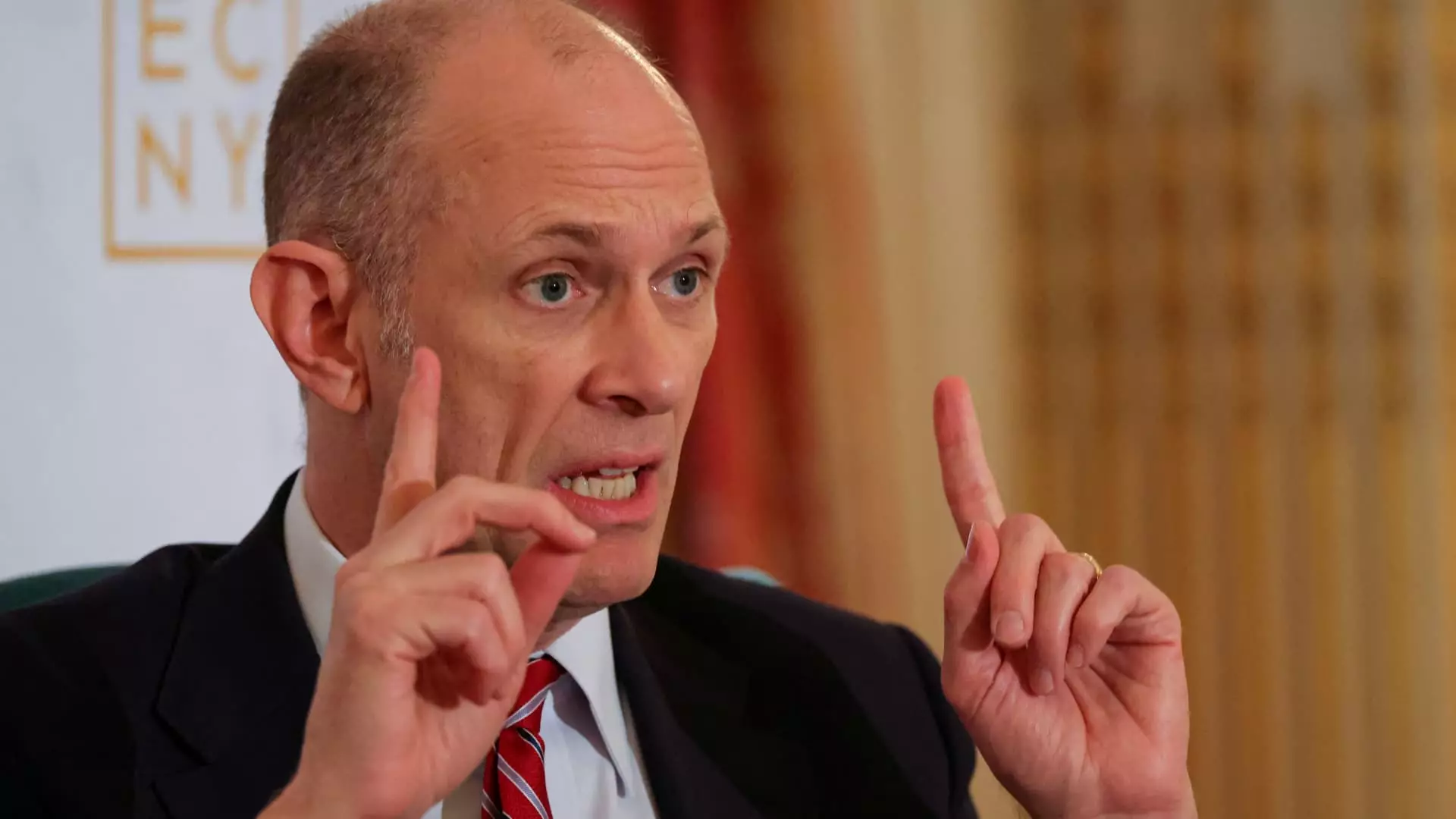In a time of global uncertainty, no factor looms larger than the unpredictability of trade policies spearheaded by the U.S. administration. President Donald Trump’s recent threats to impose tariffs—rumored to be as high as 50% on European Union imports—serve as a stark reminder of how fragile the economic landscape is. These aggressive postures not only create immediate ripples in the market but also instigate a broader sense of apprehension regarding fiscal stability. The stakes are high, and the repercussions could be dire. A recent statement from Austan Goolsbee, President of the Chicago Federal Reserve, highlighted how such policies impact not only trade but also interest rates, inflation, and employment—key indicators of economic health.
The saber-rattling around tariff increases has injected a heightened level of anxiety into markets, as investors scramble to understand what might come next. Notably, there is an anxiety linked to consumer products—Apple’s iPhone, for instance—which could face a significant tariff burden. Although it may seem trivial in the grand scheme, such increases can set a precedent that reverberates throughout various sectors, revealing the interconnectedness of modern economies.
The Fed’s Cautious Stance
Given the current climate, Goolsbee’s assertion that the Federal Reserve is treading lightly is markedly prudent. By acknowledging that while he envisions a scenario with lower interest rates, he remains cautious due to the existing trade tensions, Goolsbee presents a compelling case for vigilance. Tariff impositions can lead to inflationary pressures, which places the Federal Reserve in a challenging position. Previously, interest rates were anticipated to decline as a supportive measure for economic growth. Now, however, the central bank finds itself re-evaluating its priorities because of external shocks induced by erratic trade policies.
Moreover, Goolsbee made it clear that the Fed’s response isn’t predetermined. He articulated a realistic sentiment: “Everything’s always on the table.” This flexibility is crucial, given that a sudden resurgence of inflation could undermine the Fed’s goals. Tariffs that spur inflation can create stagflation, the very situation central bankers dread. During periods of stagnation, consumers face rising prices while incomes fail to grow—leading to a detrimental cycle that threatens everything from consumer confidence to job growth.
The Illusory Reassurance of Economic Growth
Despite the looming threats from tariffs, Goolsbee believes in a potential trajectory towards sustainable economic growth. He emphasized a personal optimism, believing that conditions could stabilize in the coming months and years. However, this optimism is painted against a backdrop of uncertainty that should not be overlooked. The idea that we can return to a flourishing economy within a “10 to 16 months” timeframe feels overly ambitious when one considers how often external factors can derail such aspirations.
What’s equally disconcerting is the prospect of the Fed adopting a more reactive posture rather than a proactive one. The central bank is now wrestling with events largely outside its control, which diminishes its influence on macroeconomic outcomes. The debate surrounding interest rates has morphed into a convoluted dynamic of anticipating tariffs rather than focusing on domestic employment or inflation metrics.
Implications for Long-Term Economic Planning
The uncertainty surrounding trade policies has significant implications for long-term economic strategies. Businesses are left in limbo, unsure whether to invest, expand, or maintain the status quo. This lack of clarity can stifle innovation and economic growth, favoring short-term gains for companies that can manage to sidestep the turmoil but hindering larger frameworks designed for sustainable development.
Moreover, as consumers brace for potential price hikes stemming from tariffs, the caution shown by both businesses and consumers may ultimately lead to an economic slowdown. The last thing the U.S. economy needs is a chilling effect on spending, an unfortunate yet plausible outcome of the current stalemate in trade relations.
While the Federal Reserve’s role of managing economic outcomes should insulate us from the whims of political maneuvers, as underscored by Goolsbee’s sentiments, it is clear that political actions today pose a very real threat to long-term stability and growth. The convergence of fiscal and monetary policy requires deftness, one that seems elusive in an environment characterized by volatility and unpredictability.

